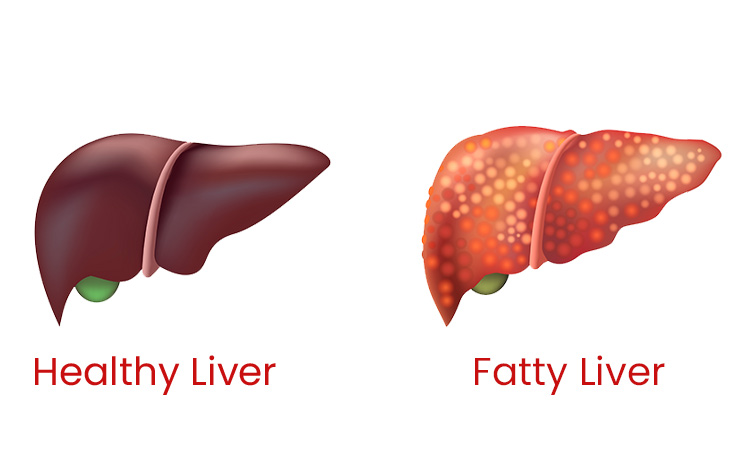What Are the Common Symptoms of Fatty Liver Disease?
2025-05-22 / RG STONE HOSPITAL / Alcoholic Fatty Liver

Fatty liver disease is becoming increasingly common in today’s fast-paced lifestyle, often going unnoticed in its early stages. Characterized by the buildup of fat in liver cells, this condition can lead to serious health complications if not addressed in time. Understanding fatty liver disease symptoms is crucial for early diagnosis and treatment.
What is Fatty Liver Disease?
Fatty liver disease occurs when more than 5-10% of the liver's weight is made up of fat. It is primarily classified into two types:
-
Non-Alcoholic Fatty Liver Disease (NAFLD): Caused by factors such as obesity, high cholesterol, and insulin resistance.
-
Alcoholic Fatty Liver Disease: Caused by excessive alcohol intake damaging liver tissues.
In both cases, the liver’s ability to function is impaired, leading to inflammation, scarring (fibrosis), and in severe cases, cirrhosis or liver failure.
Common Fatty Liver Disease Symptoms
One of the most challenging aspects of fatty liver disease is that it often presents no symptoms in its early stages. However, as the condition progresses, the following signs may appear:
1. Fatigue and Weakness
Feeling unusually tired or lacking energy is one of the earliest and most reported symptoms.
2. Discomfort or Pain in the Upper Right Abdomen
You might feel a dull or aching pain in the upper right side of the abdomen, where the liver is located.
3. Unexplained Weight Loss
Sudden and unintentional weight loss can be a sign of liver stress.
4. Swelling in the Abdomen (Ascites)
As the disease progresses, fluid may accumulate in the abdomen, causing swelling and discomfort.
5. Enlarged Liver
A physician may detect an enlarged liver during a routine physical exam.
6. Yellowing of Skin and Eyes (Jaundice)
In severe cases, liver function decline can lead to jaundice, a yellow tint in the skin and eyes.
7. Confusion or Difficulty Concentrating
This occurs when toxins build up in the brain due to poor liver function, a condition known as hepatic encephalopathy.
Risk Factors for Fatty Liver Disease
-
Obesity or being overweight
-
Type 2 diabetes or insulin resistance
-
High cholesterol or triglyceride levels
-
Sedentary lifestyle
-
Poor dietary habits
-
Excessive alcohol consumption (for alcoholic fatty liver)
Diagnosis and Management
Fatty liver disease is usually diagnosed through imaging tests like ultrasound or CT scans, and confirmed with blood tests or liver biopsy if needed.
Management strategies include:
-
Losing weight through a healthy diet and exercise
-
Managing diabetes and cholesterol levels
-
Avoiding alcohol
-
Regular monitoring and follow-ups
Conclusion
Fatty liver disease is a silent condition that requires attention before it progresses to a more severe stage. Being aware of fatty liver disease symptoms can help in early detection and timely management.
If you or a loved one is experiencing any of the symptoms mentioned above, don’t delay a medical consultation. Early intervention can make all the difference in preventing serious liver complications.
Categories
Hernia Repair
Appendicitis
Piles
Urological Treatment
Hernia treatment
Enlarged Prostate (BPH)
Gall Bladder Stone
Urinary / Kidney Stone
Vitamins
Indian Health Care System
Exercise
Obesity
Female Urinary Incontinence
Single Incision Laparoscopic Surgery (SILS)
Kidney Cancer
Bladder Cancer
Ovarian cancer
Nephrology
Bariatric Surgery
Kidney Function Test
Female Urology
Radiation Therapy
Alcoholic Fatty Liver
Liver disease
Gastroenterology
Kidney Disease

